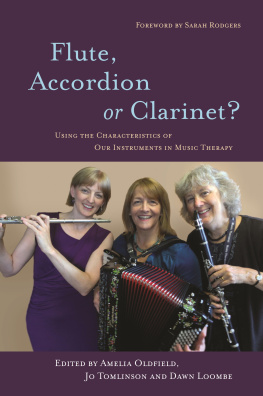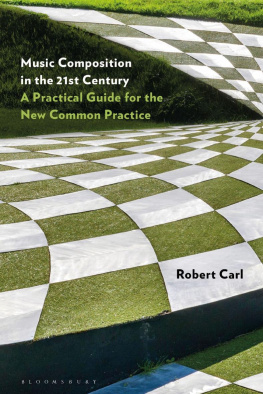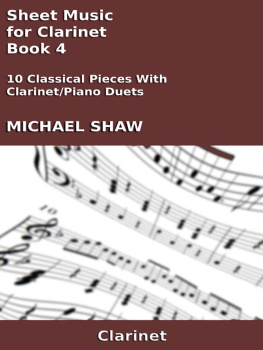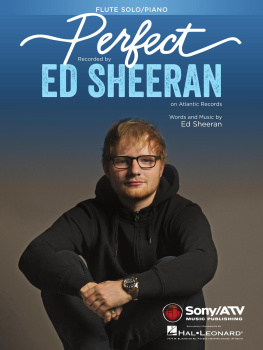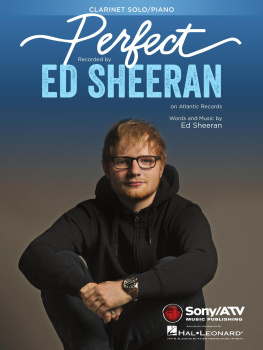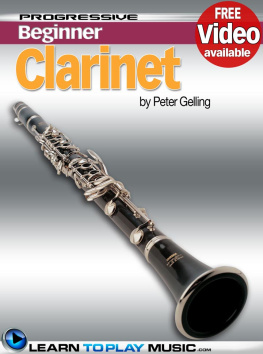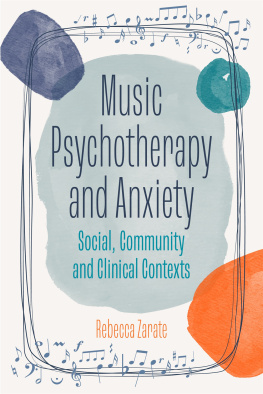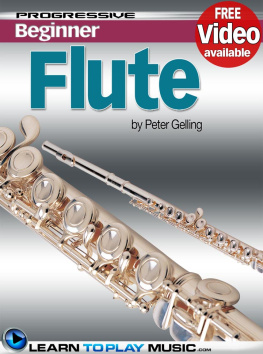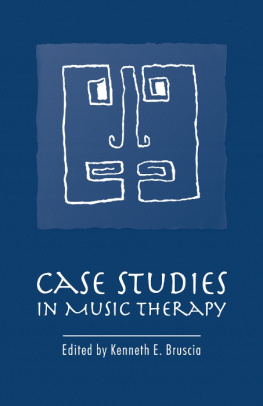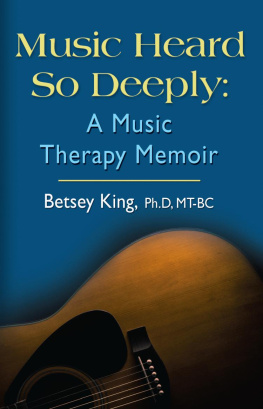Loombe Dawn - Flute, Accordion or Clarinet?
Here you can read online Loombe Dawn - Flute, Accordion or Clarinet? full text of the book (entire story) in english for free. Download pdf and epub, get meaning, cover and reviews about this ebook. year: 2015, publisher: Jessica Kingsley Publishers, genre: Home and family. Description of the work, (preface) as well as reviews are available. Best literature library LitArk.com created for fans of good reading and offers a wide selection of genres:
Romance novel
Science fiction
Adventure
Detective
Science
History
Home and family
Prose
Art
Politics
Computer
Non-fiction
Religion
Business
Children
Humor
Choose a favorite category and find really read worthwhile books. Enjoy immersion in the world of imagination, feel the emotions of the characters or learn something new for yourself, make an fascinating discovery.
- Book:Flute, Accordion or Clarinet?
- Author:
- Publisher:Jessica Kingsley Publishers
- Genre:
- Year:2015
- Rating:3 / 5
- Favourites:Add to favourites
- Your mark:
- 60
- 1
- 2
- 3
- 4
- 5
Flute, Accordion or Clarinet?: summary, description and annotation
We offer to read an annotation, description, summary or preface (depends on what the author of the book "Flute, Accordion or Clarinet?" wrote himself). If you haven't found the necessary information about the book — write in the comments, we will try to find it.
Flute, Accordion or Clarinet? — read online for free the complete book (whole text) full work
Below is the text of the book, divided by pages. System saving the place of the last page read, allows you to conveniently read the book "Flute, Accordion or Clarinet?" online for free, without having to search again every time where you left off. Put a bookmark, and you can go to the page where you finished reading at any time.
Font size:
Interval:
Bookmark:

Flute, Accordion or Clarinet?
of related interest
Music Therapy in Schools
Working with Children of All Ages in Mainstream and Special Education
Edited by Jo Tomlinson, Philippa Derrington and Amelia Oldfield
Foreword by Dr. Frankie Williams
ISBN 978 1 84905 000 5
eISBN 978 0 85700 474 1
Creating Change for Complex Children and their Families
A Multi-Disciplinary Approach to Multi-Family Work
Jo Holmes, Amelia Oldfield and Marion Polichroniadis
Foreword by Professor Ian Goodyer
ISBN 978 1 84310 965 5
eISBN 978 0 85700 440 6
Music Therapy with Children and their Families
Edited by Amelia Oldfield and Claire Flower
Foreword by Vince Hesketh
ISBN 978 1 84310 581 7
eISBN 978 1 84642 801 2
Interactive Music Therapy in Child and Family Psychiatry
Clinical Practice, Research and Teaching
Amelia Oldfield
Foreword by Dr. Joanne Holmes
ISBN 978 1 84310 444 5
eISBN 978 1 84642 548 6
Pied Piper
Musical Activities to Develop Basic Skills
John Bean and Amelia Oldfield
ISBN 978 1 85302 994 3
Flute, Accordion or Clarinet?
Using the Characteristics of Our
Instruments in Music Therapy
Edited by Amelia Oldfield,
Jo Tomlinson and Dawn Loombe
Foreword by Sarah Rodgers

Jessica Kingsley Publishers
London and Philadelphia
First published in 2015
by Jessica Kingsley Publishers
73 Collier Street
London N1 9BE, UK
and
400 Market Street, Suite 400
Philadelphia, PA 19106, USA
www.jkp.com
Copyright Amelia Oldfield, Jo Tomlinson and Dawn Loombe 2015
Foreword copyright Sarah Rodgers 2015
Front cover image: David Loombe
All rights reserved. No part of this publication may be reproduced in any material form (including photocopying or storing it in any medium by electronic means and whether or not transiently or incidentally to some other use of this publication) without the written permission of the copyright owner except in accordance with the provisions of the Copyright, Designs and Patents Act 1988 or under the terms of a licence issued by the Copyright Licensing Agency Ltd, Saffron House, 610 Kirby Street, London EC1N 8TS. Applications for the copyright owners written permission to reproduce any part of this publication should be addressed to the publisher.
Warning: The doing of an unauthorised act in relation to a copyright work may result in both a civil claim for damages and criminal prosecution.
Library of Congress Cataloging in Publication Data
A CIP catalog record for this book is available from the Library of Congress
British Library Cataloguing in Publication Data
A CIP catalogue record for this book is available from the British Library
ISBN 978 1 84905 398 3
eISBN 978 0 85700 766 7
Contents
Foreword
David played the harp and Saul was refreshed; a simple and true statement of the power of music.
Music has accompanied every human journey since the historical record began not surprising, perhaps, in the light of the planets deep and connected natural sounds and rhythm.
In this book, music therapists tell us about their personal journeys with their first instruments and how they have been able to use these instruments in clinical music therapy to accompany clients on their journeys.
Although I am not a music therapist, the power of music came home to me in a profound way when I lived for two years in Sierra Leone, working for VSO (Voluntary Service Overseas). As a very new graduate, I was responsible for training music teachers. My work took me up country to native schools in the African bush where, notwithstanding the very English-based curriculum, I was privileged to experience the depth of meaning brought to peoples lives through their engagement with the indigenous music. Here, music meant communication, conversation, approval, achievement, recognition, rite of passage, as well as work, community, relaxation and entertainment.
That music could be so intrinsic and specific a part of life fundamental, essential, connecting and completing opened my eyes, ears and mind to a relationship that already had my heart! My musical experience began with my father who played saxophone and piano in dance bands and my own formal training started on the piano at the age of five. Bassoon, flute, guitar and cello followed and, later, all were eclipsed by composing and conducting. Music was central to my childhood, making its claim on me through family, friends, education and recreation all adding pathways on the map of my adult musical life.
In the same way, almost all the music therapists writing in this book trace their passion for their first instrument and for music in general to childhood or to family experiences.
My career in music has led me through many fascinating encounters, not least of which was a commission for the City of London Sinfonia for a cross-cultural work I composed and conducted called Saigyo , named for the Japanese warrior poet on whose work I drew for inspiration. The scope of this commission embraced working with many different kinds of musicians in many different circumstances, from the Japanese shakuhachi player whose instrument featured in the new composition, to the school children who developed projects around the new piece and the community groups with whom I worked to produce a pre-concert performance in Peterborough cathedral.
A special needs group, an adult recorder ensemble and a samba band met under my guidance, not only to work together but also to perform as an integrated creative entity. This unusual combination immediately threw into sharp relief very different approaches to music and contrasting but complementary aspects of musical experience, from emotional directness, to intellectual exploration to sheer physical immersion.
As we work-shopped our ideas, the participants played not only as their existing groups but also cross-fertilised in subgroups of threes. There were challenges of communication, of technical ability, of aspiration, and of interaction. Those whose musical repertoire was usually more complex found themselves seeking simplicity and those whose experience was more simple were drawn to greater complexity. Those whose musical interest was focused on rhythm experienced the joy of sonority and those who were more accustomed to restricted practices broke out into extremes of dynamic, range and emotion.
This was a wonderful, touching and highly instructive experience. Music was the differentiating element and it became the combining force. Similarly, chapters in this book show that while each instrument has its own characteristics, ultimately, it is through the music-making itself that interactions can develop and changes can occur.
Music is nothing more or less than a disturbance of the air the very air around us without which we would not exist. Music inhabits this world of vibration by pipe, by string, by skin, by block, and this in turn is what resonates with the human being.
This I believe is one of those unsung secrets, one of those truths that we as musicians all know and yet somehow do not often articulate and it is the reason why this publication is so important. To hear from musician practitioners their experiences of opening up the love, knowledge and intimacy of their first instrument to those they are there to help, is a joy.
For me as a composer, my music must touch an emotional chord, provoke an emotional response, leave an emotional resonance. The essays in this book make a valuable contribution to the understanding of how we invite and make that emotional connection with music. I wholeheartedly recommend that Flute, Accordion or Clarinet? Using the Characteristics of Our Instruments in Music Therapy is disseminated beyond the realm of music therapy and is read by as many musicians as possible.
Next pageFont size:
Interval:
Bookmark:
Similar books «Flute, Accordion or Clarinet?»
Look at similar books to Flute, Accordion or Clarinet?. We have selected literature similar in name and meaning in the hope of providing readers with more options to find new, interesting, not yet read works.
Discussion, reviews of the book Flute, Accordion or Clarinet? and just readers' own opinions. Leave your comments, write what you think about the work, its meaning or the main characters. Specify what exactly you liked and what you didn't like, and why you think so.

